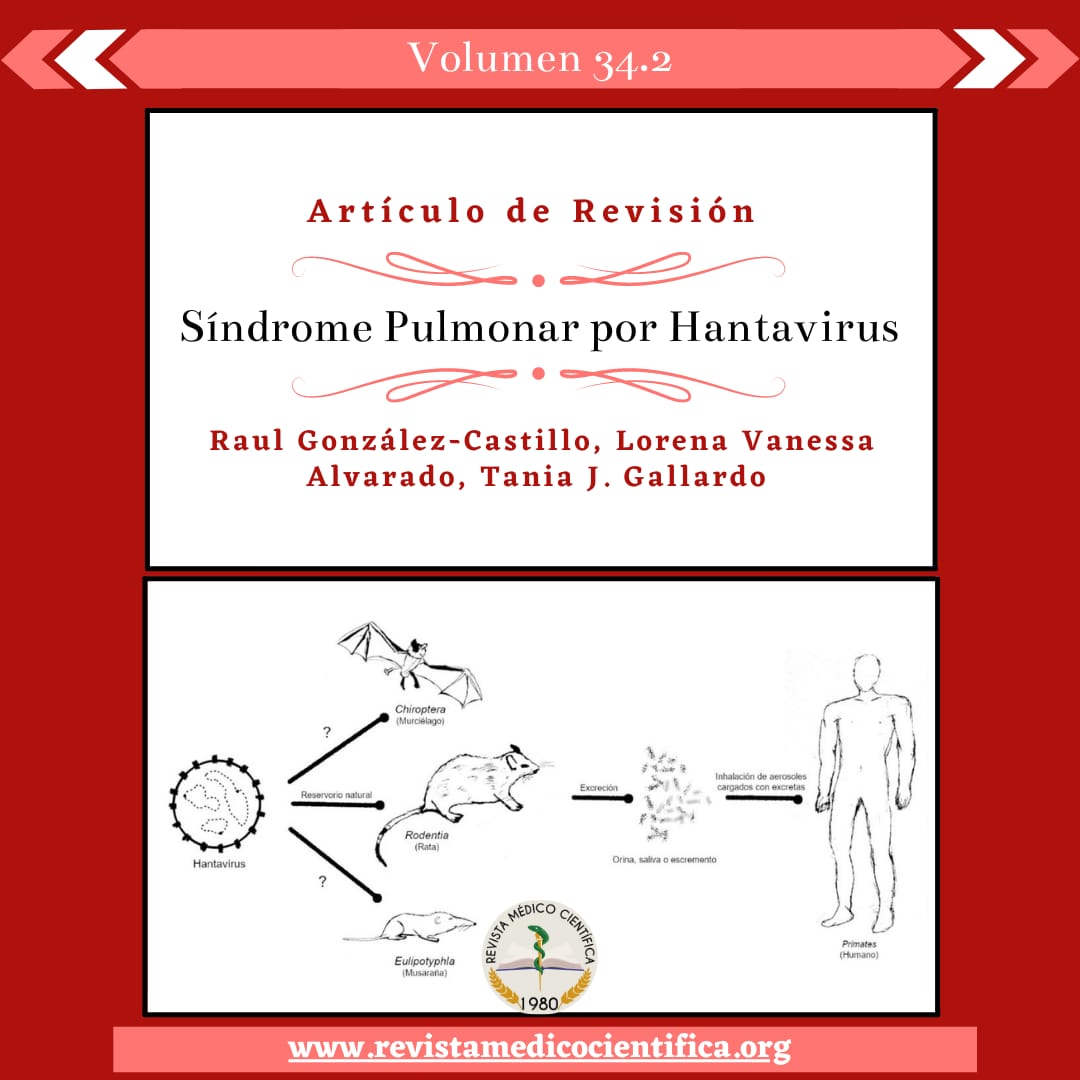HANTAVIRUS PULMONARY SYNDROME: A REVIEW ARTICLE
Main Article Content
Abstract
BACKGROUND: Hantavirus pulmonary syndrome is caused by a virus from the order Bunyavirales, family Hantaviridae. First described in 1993, during a case outbreak in the United States. Nowadays, it has more than fifteen serotypes in America, with high mortality and variable prevalence. Infected rodents carry the virus. Rodents are animals in close contact with humans because of climate changes and migration patterns. The viral endothelial tropism affects the respiratory system, producing as a consequence pulmonary infiltrate as well as thrombocytopenia, with progression to noncardiogenic pulmonary edema and shock in a matter of a few days. There is no specific treatment or vaccine for hantavirus infection.
OBJECTIVES: Present the Hantavirus Pulmonary Syndrome origin; understand its epidemiology, physiopathology, and clinical manifestations; acknowledge diagnostic methods and possible treatments.
DESIGN: We used medical search engines such as Pubmed, Cochrane, Science Direct and Scielo. We included only published scientific articles in English and Spanish. We collected 148 publications between 2010 and 2020, such as case reports, observational and experimental studies.
CONCLUSION: Hantavirus infections are diverse in terms of evolution, reservoirs, ways of transmission, risk factors, global distribution and principal endemic areas. Understanding those aspects allows to elaborate public health strategies. It is not only a zoonotic disease, but an emergent disease that demands multidisciplinary management for the indication of new therapies.
Article Details

This work is licensed under a Creative Commons Attribution-NonCommercial-NoDerivatives 4.0 International License.
The authors grant the Editorial Comitte of Revista Medico Cientifica the right to publish this article in it. Also, they state that this manuscript has not been published prevously.

